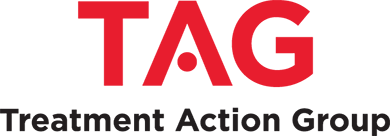January 7, 2016
Contact: Kenyon Farrow, U.S. & Global Health Policy Director, 202.550.7640, Kenyon.farrow@treatmentactiongroup.org
Treatment Action Group (TAG) welcomes the release of the Obama Administration’s National Action Plan for Combating Multidrug-Resistant Tuberculosis. Strengthening the domestic and global and research efforts to address multidrug-resistant tuberculosis (MDR-TB) are critical to ending the suffering this preventable, curable disease needlessly causes. However, the targets set forth in this plan are not ambitious enough to effectively stop the spread of MDR-TB. The Administration and Congress must appropriate funding levels to ensure that the U.S. can effectively address MDR-TB.
MDR-TB remains a massive threat, striking half a million new patients a year worldwide. The new World Health Organization’s (WHO’s) End TB Strategy by 2035 will only be possible with a scale-up of efforts to address MDR-TB. Only one-quarter of MDR-TB patients received treatment in 2014, and at best, only half of them successfully completed treatment. Just one in ten people with MDR-TB are cured each year.
Successful treatment is a challenge. Patients have to commit to two years of treatment with injections and dozens of pills a day. They face very harsh side effects, from deafness to psychosis. Treatment often requires patients to travel to be observed taking their medications. Current treatment approaches for MDR-TB are extremely costly to patients and to TB programs. An outbreak of MDR-TB in New York City in the late 1980s cost over a billion dollars (in 1991 dollars) to resolve. Diagnosing MDR-TB is currently an expensive and lengthy process. No widely effective vaccine or treatment to prevent MDR-TB exists. TAG believes that this action plan must address the research and development (R&D) funding and innovation gaps for new treatments, prevention options, and diagnostics.
“Until there are newer TB drugs that are more affordable and easier to take, MDR-TB will continue to persist.“ says Kenyon Farrow, U.S. & Global Health Policy Director of Treatment Action Group. “This action plan has to include new funding for R&D to tackle MDR-TB. We need the kind of global investment and innovation that we saw with HIV, where we’ve gone from dozens of pills a day down to just a single pill a day.”
Modest gains made in TB research funding from 2005 to 2009 have stagnated in the five years since, and total funding for TB R&D has never exceeded $700 million per year. With this minimal investment, we have managed to develop two new drugs to combat MDR-TB, and produce a few improved diagnostic tests. But much more investment is needed to ensure the uptake of these new options, and to develop even better ones. With limited industry investment in TB research, continued and increased public funding is critical—over 62% of TB research funding came from public institutions last year. While the U.S. government continues to make the largest investments in TB research, it is important that R&D funding for newer treatments with shorter, more tolerable regimens, a better vaccine to prevent TB, and faster, cheaper tests to detect MDR-TB, becomes a top priority. The U.S. government should increase its current R&D spending levels from $247 million to $300 million for FY17, and reach $500 million by 2020.
Until better options are developed, we need to make better use of the tools we have. Within the U.S., we must end the persistent and pervasive drug shortages that have endangered patient lives and public health by creating a national stockpile of medicines. Globally, this plan calls for assisting all high MDR-TB burden countries with implementing national action plans, and that has to include country registration and uptake of bedaquiline and delamanid, two new drugs to treat MDR-TB that are still unavailable to most of the estimated 450,000 patients around the world each year who could benefit from them.
TAG is happy to see the Obama Administration take a step forward by creating this National Action Plan for Combating MDR-TB, which increases the sense of urgency for TB, harmonizes the domestic and global responses, and elevates the importance of addressing MDR-TB in line with other initiatives dealing with the threat of drug resistant strains of several other diseases.
Unfortunately, this plan is hindered by unambitious targets, and a lack of an accompanying budget. In order to successfully reduce the spread of MDR-TB globally, we will have to surpass the targets outlined in the action plan, and to increase the funding necessary to really combat the threat that MDR-TB poses to people across the globe.
For more information on the inadequate funding for TB research and development, please see: https://www.treatmentactiongroup.org/tbrd2015.
